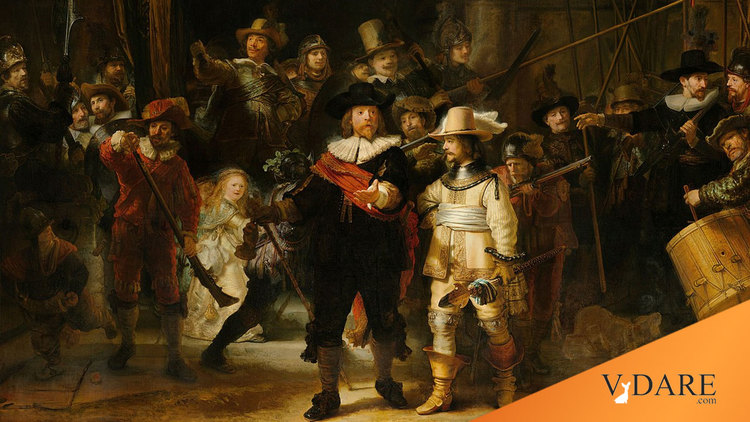
By Steve Sailer
01/19/2022

From my new column in Taki’s Magazine:
Rembrandt never left the Netherlands in his life, but the recent Rembrandt in Amsterdam exhibition at the National Gallery of Canada still managed to obsess, in the style of our times, over slavery, colonialism, and racism. The Ottawa museum announced, with a straight face:
The Dutch Republic of Rembrandt’s time had a very clear connection with the history of Turtle Island via contact between Indigenous peoples and Dutch settlers and through the legacy of the transatlantic slave trade.
Indeed, in the exhibition materials, it’s Turtle Island all the way down:
Rembrandt’s life coincided with many significant developments in the early contact period with Turtle Island…
But, of course, as important as the First Nations of Turtle Island are to understanding Rembrandt in Amsterdam, blacks cannot be ignored either. As The Globe and Mail explains:
At the heart of the gallery’s new Rembrandt exhibition, half a dozen portraits of beautiful 17th-century ladies in black white-collar dresses confront a collection of everyday stainless steel teaspoons recently assembled by the Congolese-Canadian artist Moridja Kitenge Banza. …
The fundamental problem facing art museums in the Age of George Floyd is that history’s designated bad guys — white men — produced vastly more of history’s best art than did the official good guys, such as blacks and New World Indians.
To assuage the wounded amour propre of the presently privileged, the National Gallery put up a placard announcing that the historical shortage of Old Master paintings by blacks is the fault of white men:
WHAT COULD HAVE BEEN
Slavery and colonialism caused immense human suffering and loss of life. These practices also had other, less obvious repercussions. For instance, while artists flourished in cities such as Amsterdam during the era of slavery, producing a rich culture and leaving wonders to behold centuries later, the opportunity to do the same was stripped from the enslaved. Although Black subjects exist in European art from this period, few artworks were actually created by Black diasporic people during this time due to slavery and anti-Black racism. What might have been if chattel slavery had not taken place? How many “master” artists were lost during those centuries?
Read the whole thing there.
This is a content archive of VDARE.com, which Letitia James forced off of the Internet using lawfare.